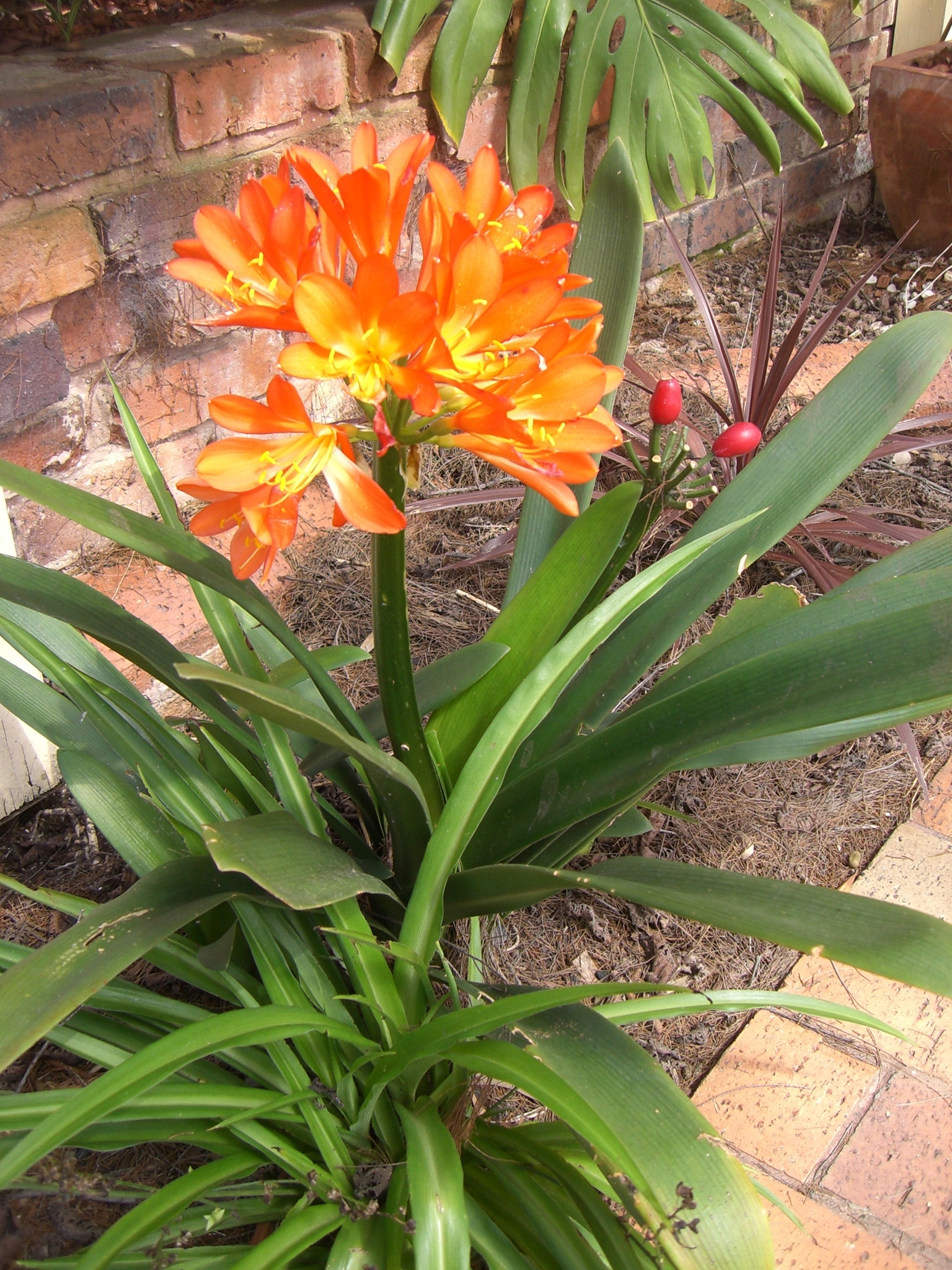
Named in 1828 after Lady Charlotte Clive, 30th Duchess of Northumberland.
Evergreen perennials, the rootstock a condensed rhizome with thick roots. Leaves more or less in 2 ranks, strap-shaped, dark green, evergreen. Inflorescence an umbel with inconspicuous bracts borne on a flattened stalk. Flowers spreading to drooping, wide open and radially symmetrical to narrow and curved, mostly orange, rarely yellow. Fruit a red or occasionally yellow berry with 1-few large ovoid pale brown seeds with membranous coats.
Grown as a highly shade tolerant ground cover or as pot plants able to withstand low humidity and low light. It can take 5 years before the first flowering.
Mostly by division; plants grown from seed take 3-5 years to flower.
Leaves dark green; evergreen; the bases not forming a bulb.
4 species in South Africa.
Duncan (1999), Koopowitz (2002). Clivia Yearbook. Kirstenbosch Botanical Garden.
Source: (2005). Amaryllidaceae. In: . Horticultural Flora of South-eastern Australia. Volume 5. Flowering plants. Monocotyledons. The identification of garden and cultivated plants. University of New South Wales Press.
